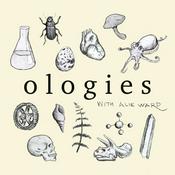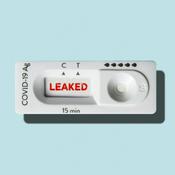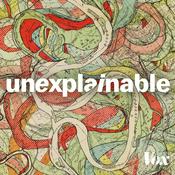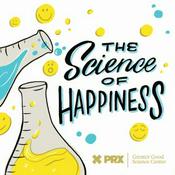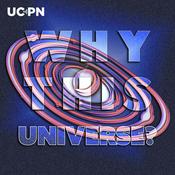1083 episodes

The 2025 Big Baby Trial
05/1/2026 | 27 mins.
Currently, as of today’s date, neither the ACOG nor SMFM currently support routine early induction of labor for suspected fetal macrosomia, instead recommending individualized counseling and reserving elective cesarean for extreme estimated fetal weights. However, a 2025 multicenter, open-label, randomized controlled trial was published in the Lancet comparing induction of labor versus standard care in pregnant women with fetuses suspected to be large for gestational age. The study used a parallel-group design with 1:1 randomization, enrolling women from 106 NHS hospitals across England, Scotland, and Wales. The per-protocol analysis demonstrated a significant reduction (40%) in shoulder dystocia with induction of labor at 38- 38 weeks and 4 days. Is this in conflict with the ACOG current guidance? In this episode, we will review the “Big Baby study” from the Lancet and provide 3 main limitations of this very large study, review the importance of PP vs ITT results, and explain why more data is still needed. Listen in for details. 1. ACOG PB 178; 2017 (reaffirmed 2024)2. Gardosi J, Ewington LJ, Booth K, Bick D, Bouliotis G, Butler E, Deshpande S, Ellson H, Fisher J, Gornall A, Lall R, Mistry H, Naghdi S, Petrou S, Slowther AM, Wood S, Underwood M, Quenby S. Induction of labour versus standard care to prevent shoulder dystocia in fetuses suspected to be large for gestational age in the UK (the Big Baby trial): a multicentre, open-label, randomised controlled trial. Lancet. 2025 May 17;405(10491):1743-1756. doi: 10.1016/S0140-6736(25)00162-X. Epub 2025 May 1. PMID: 40319899.3. Blaauwgeers, Anne N et al. Rethinking induction of labour for LGA fetuses: the Big Baby trial. The Lancet, Volume 406, Issue 10512, 1562

Brain Zapping at Home Now Approved!
02/1/2026 | 26 mins.
In mid-December 2025, the FDA approved an at home devicethat aims to treat depression by sending electric current into a part of the brain (the prefrontal cortex) known to regulate mood. This has been available in the UK since 2019 but it is new to the US. The manufacturer has stated that over 55,000 patients have used the device across Europe, the UK, Switzerland, and Hong Kong. How does this work? Is there data to support this new therapy? In this episode, we will summarize three consecutive years of data (2023, 2024,2025) to answer that question. Listen in for details. 1. Sci Amer: https://www.scientificamerican.com/article/u-s-approves-first-device-to-treat-depression-with-brain-stimulation-at-home/2. August 12, 2023: Burkhardt, Gerrit et al.Transcranial direct current stimulation as an additional treatment to selectiveserotonin reuptake inhibitors in adults with major depressive disorder inGermany (DepressionDC): a triple-blind, randomised, sham-controlled,multicentre trial The Lancet, Volume 402, Issue 10401, 545 – 5543. October 21, 2024: Woodham, R.D., Selvaraj, S.,Lajmi, N. et al. Home-based transcranial direct current stimulation treatmentfor major depressive disorder: a fully remote phase 2 randomizedsham-controlled trial. Nat Med 31, 87–95 (2025). https://doi.org/10.1038/s41591-024-4. December 15, 2025: Moshfeghinia R, Bordbar S,Roointanpour Y, Arab Bafrani M, Shalbafan M. Efficacy and safety of home-basedtranscranial direct current stimulation (tDCS) on patients with depressivedisorders: a systematic review and meta-analysis of randomized clinical trials.Sci Rep. 2025 Dec 15;15(1):43850. doi: 10.1038/s41598-025-28648-5. PMID:41398008; PMCID: PMC12705823.

New Data on VO-CPP (PeVD) Therapy
30/12/2025 | 32 mins.
While endometriosis is highly associated with Chronic Pelvic Pian (CPP), some women may suffer from a different primary or coexistent secondary etiology: pelvic vascular congestion, called vascular origin (VO)- CPP. Although controversial as an entity, there have been diagnostic algorithms published (via pelvic ultrasound. MRI, or venography) for this condition. Approximately 10-40% of chronic pelvic pain cases may be attributed to pelvic vascular congestion (now termed pelvic venous disorder), though estimates vary considerably depending on the population studied and diagnostic criteria used. In premenopausal women specifically, the prevalence appears higher. One study found that 8% of all premenopausal women had documented chronic pelvic pain of unclear etiology along with dilated ovarian and pelvic veins on cross-sectional imaging. Therapies for this have been limited. Flavonoids are abundant in a colorful diet of fruits, vegetables, tea, and wine, with common sources including citrus fruits (flavanones), berries, apples, grapes (flavan-3-ols/anthocyanins), onions, kale, broccoli (flavonols), and tea, cocoa, red wine (flavan-3-ols), plus soybeans (isoflavones), all providing antioxidants and potential health benefits like better heart and brain health. On Dec. 23, 2025, in the journal Phlebology, researchers published a systematic review on the potential benefits of specific flavonoid mixtures which may provide relief to VO-CPP. Listen in for insights and details.1. Gloviczki ML, Demetres MR, Salazar G, Khilnani NM. Venoactive drugs for venous origin chronic pelvic pain in women: A systematic review. Phlebology. 2025 Dec 23:2683555251411027. doi: 10.1177/02683555251411027. Epub ahead of print. PMID: 41432346.2. Knuttinen MG, Machan L, Khilnani NM, Louie M, Caridi TM, Gupta R, Winokur RS. Diagnosis and Management of Pelvic Venous Disorders: AJR Expert Panel Narrative Review. AJR Am J Roentgenol. 2023 Nov;221(5):565-574. doi: 10.2214/AJR.22.28796. Epub 2023 Apr 5. PMID: 37095667.

Emily's Thanks to You
28/12/2025 | 1 mins.
A brief THANK YOU prior to 2025 end.

FHT Baseline Change (110-160) in Labor: Danger, or Disregard?
27/12/2025 | 24 mins.
In 2002, the National Institute of Child Health and Human Development (NICHD) proposed the 3-Tier fetal heart rate (FHR) classification system that was subsequently adopted by many organizations, categorizing tracings into three groups: Category I (normal), Category II (indeterminate), and Category III (abnormal). Recently, our podcast team received an interesting question form one of our podcast family members: “If there is a change in the fetal heart rate tracing intrapartum, but it is still in the normal range (like 120 going to 150)- and variability is normal, is that an abnormality? And what is meant by a ‘ZigZag’ FHT pattern (different than marked variability)?”. That is a fantastically complex question…and we will explain the answer in this episode.1. Zullo F, Di Mascio D, Raghuraman N, Wagner S, Brunelli R, Giancotti A, Mendez-Figueroa H, Cahill AG, Gupta M, Berghella V, Blackwell SC, Chauhan SP. Three-tiered fetal heart rate interpretation system and adverse neonatal and maternal outcomes: a systematic review and meta-analysis. Am J Obstet Gynecol. 2023 Oct;229(4):377-387. doi: 10.1016/j.ajog.2023.04.008. Epub 2023 Apr 11. PMID: 37044237.2. Ghi T, Di Pasquo E, Dall'Asta A, et al. Intrapartum Fetal Heart Rate Between 150 and 160 BPM at or After 40 Weeks and Labor Outcome.Acta Obstetricia Et Gynecologica Scandinavica. 2021;100(3):548-554. doi:10.1111/aogs.14024.3. The 3 Tier System: chrome-extension://efaidnbmnnnibpcajpcglclefindmkaj/https://ncc-efm.org/filz/NICHD_Reference_from_CCPR.pdf4. Jia YJ, Ghi T, Pereira S, Gracia Perez-Bonfils A, Chandraharan E. Pathophysiological Interpretation of Fetal Heart Rate Tracings in Clinical Practice. American Journal of Obstetrics and Gynecology. 2023;228(6):622-644. doi:10.1016/j.ajog.2022.05.0235. Ghi T, Di Pasquo E, Dall'Asta A, et al. Intrapartum Fetal Heart Rate Between 150 and 160 BPM at or After 40 Weeks and Labor Outcome. Acta Obstetricia Et Gynecologica Scandinavica. 2021;100(3):548-554. doi:10.1111/aogs.14024.6. Yang M, Stout MJ, López JD, Colvin R, Macones GA, Cahill AG. Association of Fetal Heart Rate Baseline Change and Neonatal Outcomes. Am J Perinatol. 2017 Jul;34(9):879-886. doi: 10.1055/s-0037-1600911. Epub 2017 Mar 16. PMID: 28301895.
More Science podcasts
Trending Science podcasts
About Dr. Chapa’s OBGYN Clinical Pearls
Listen to Dr. Chapa’s OBGYN Clinical Pearls, The Rest Is Science and many other podcasts from around the world with the radio.net app

Get the free radio.net app
- Stations and podcasts to bookmark
- Stream via Wi-Fi or Bluetooth
- Supports Carplay & Android Auto
- Many other app features
Get the free radio.net app
- Stations and podcasts to bookmark
- Stream via Wi-Fi or Bluetooth
- Supports Carplay & Android Auto
- Many other app features


Dr. Chapa’s OBGYN Clinical Pearls
download the app,
start listening.




